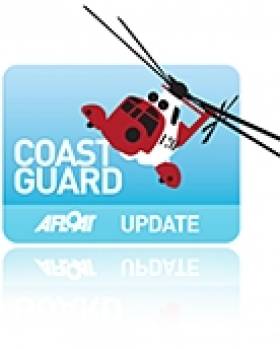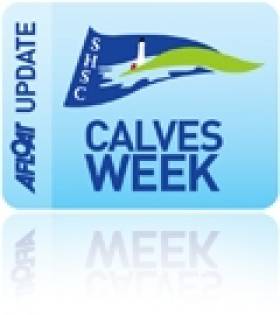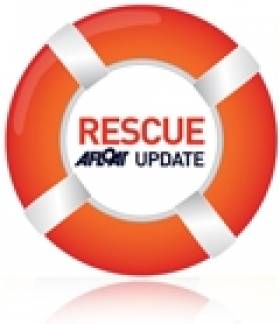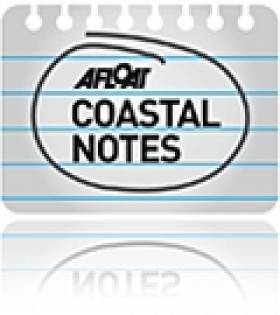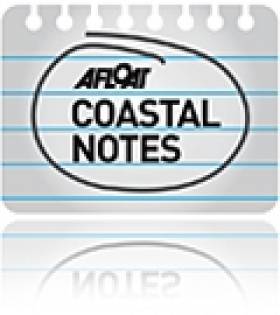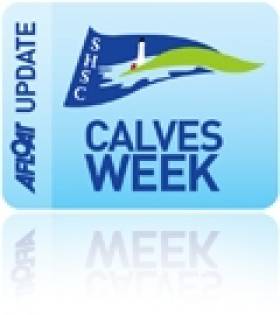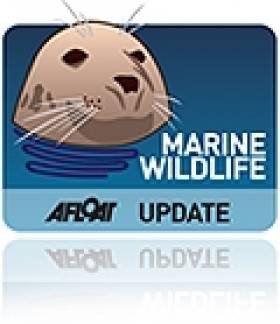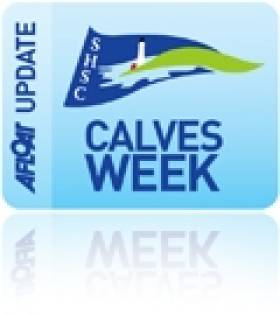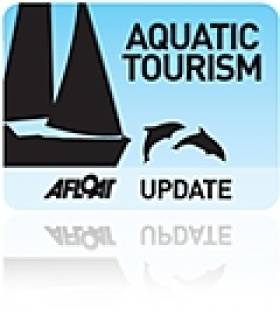Displaying items by tag: west cork
Fisherman Airlifted from French Trawler Off West Cork
#COASTGUARD - A crewman on a French trawler off West Cork has been airlifted to hospital by coastguard helicopter, as RTÉ News reports.
The fisherman is understood to have suffered head injuries on the fishing vessel some 240km off the Beara Peninsula in the early hours of this morning Tuesday 7 August.
The Irish Coast Guard's Valentia unit co-ordinated the airlift, dispatching the Shannon rescue helicopter to the trawler. The injured man was winched on board and taken to Cork University Hospital. His current condition is not yet known.
West Cork Calves Week to Welcome 60 Yachts
#calves week – With over 40 confirmed entries at present, the 2012 Calves Week in Schull is again expected to top the 60 boat mark for the annual West Cork festival of sailing.
This year's event will incorporate a race in the Scora Offshore Series and will feature racing for six classes with the ever growing white sail class split into two fleets and with a cut-off point of approximately 34ft.
The traditional overnight Offshore Scora race starts from Crosshaven on Friday night, August 3rd, while on Sunday the Schull/Baltimore regatta feeder race will provide ample opportunity for skippers and crews to familiarise themselves with Roaring Water Bay where principal race officer for Calves Week, Neil Prendeville, has drawn up a new course card featuring over forty courses taking in the many islands and natural marks.
The opening reception and skippers briefing takes place at the Fastnet Marine Centre on Monday August 6th with the first "Round the islands" race starting at 12.30pm on Tuesday.
On Wednesday the fleet will sail two races on an Olympic type course in Long Island Bay, while Thursday will see the boats head for the Fastnet Rock .
The series will finish on Friday with racing in Roaring Water Bay followed by the overall presentation of prizes and closing ceremony on Schull Main Street.
#RESCUE - Brave volunteers from the Baltimore RNLI saved the day when they jumped aboard a runaway speedboat heading for a busy pier last Friday.
As the Irish Examiner reports, it was one of four dramatic rescues made by the West Cork lifeboat crew in a single 24-hour period.
Pat Collins and Tadhg Collins were the plucky duo who attempted the daring feat from their inflatable boarding boat launched from the all-weather lifeboat.
They manoeuvred their boat close enough to the runaway RIB - which was circling at speeds of up to 20 knots ever closer to the pier after its pilot and passenger were thrown overboard - to allow Tadgh to leap on board and turn down the engines.
The RIB's crew were unharmed in the incident, swimming away and finding shelter on a ketch anchored at Sherkin Island.
Baltimore's busy 24 hours continued with call-outs from three yachts during Saturday's force 7 easterly winds.
The Irish Examiner has more on the story HERE.
'Ireland's First Coconuts' Found in West Cork Shipwreck
#COASTAL NOTES - A 17th-century merchant vessel recently discovered off West Cork could have carried Ireland's first coconuts, the Irish Examiner reports.
The shipwreck near Schull was discovered embedded in silt 30ft below the surface by workers laying pipes for the town's new waste treatment plant.
A diving exclusion zone has since been established in the area to protect the site from looters and allow marine archaeologists to investigate the wreck undisturbed.
Coconuts found in the wreck indicate that the vessel was returning to Irish waters from the Caribbean.
Experts are hoping to establish the cause of the shipwreck, which may have been due to dashing against rocks in bad weather.
It is also speculated that the ship went down around the same time of the Sack of Baltimore in 1631, when North African pirates from the Barbary Coast attacked the area, kidnapping hundreds of locals.
The Irish Examiner has more on the story HERE.
#COASTAL NOTES - A number of West Cork piers have been included in the current round of funding under the 2012 Fishery Harbour and Coastal Infrastructure Capital Programme, according to the West Cork Times.
Keelbeg Pier at Union Hall will receive €48,750 for the next stage in the completion of new facilities for parking, access and storage.
Elsewhere, Pallas Pier at Ardgroom and Schull Pier will receive €35,250 for repairs to sheet piles after a condition survey for accelerated low water corrosion (ALWC), while also in Schull, Dooneen and Skeaghanore West piers will get €37,500 to pay for redecking and slipway repair.
The funding announcement comes some months after Cork's county mayor and council manager launched two major reports on Cork's coastal areas, as previously reported on Afloat.ie.
It also follows the commitment last December by Marine Minister Simon Coveney, who is TD for Cork South-Central, to underline the importance of Ireland's coastal communities in the allocation of Government funding.
#CALVES WEEK – Sailors from Kinsale Yacht Club, Royal Cork Yacht Club as well as West Cork clubs Baltimore and Crookhaven joined with Schull Harbour Sailing Club yesterday (SCROLL DOWN FOR MORE PHOTOS) to toast Cork Dry Gin Calves Week 2012 new compact format which will consist of a four day racing series, including a race around the Fastnet Rock.
Alan Dwyer, Commodore of SHSC raised a glass to the new sponsorship and among others invited to the Cork Gin reception at Blackrock Castle in Cork Harbour was ICRA's Michael Murphy, Gail McAllister of ISA and West Cork Sailing Centre, Alan Dwyer, Tom Kirby, Bryan Cahill of Schull, Ritchie Hanley from Kinsale and Aidan Heffernan skipper of Indulgence from Royal Cork. Sailing writers Dermot Russell of the Irish Examiner and Claire Bateman of Afloat.ie also attended.
Speaking about Cork Dry Gin's sponsorship Alan Dwyer saays says "we are thrilled to have such a prestigious brand as Cork Dry Gin sponsoring this year's event, the new series will create a real buzz around Schull with a prize giving every night in the village"
The event will take place from Aug 7th - 10th to allow for visiting yachts to take part in the local regattas of Baltimore, Crookhaven and Schull.
#MARINE WILDLIFE - Another humpback whale sighting off West Cork has been confirmed by the Irish Whale and Dolphin Group (IWDG) - and it could be a new arrival to these shores.
The humpback was encountered some seven miles southeast of Galley Head near Clonakilty Bay on Wednesday 16 May by local whale watch operator Colin Barnes.
A tell-tale series of three blows and a tail fluke were enough for Barnes to confirm the species, but unfortunately its identity could not be confirmed, which means it could be a newcomer to Irish waters or one of two humpbacks sighted in the same area in earl April, as previously reported on Afloat.ie.
"If it is a new animal, this will bring to 21 the number of recognisable humpbacks recorded to date in Irish waters," said IWDG sightings co-ordinator Pádraig Whooley, who noted with interest that while the group is concluding its field work in the seasonal feeding grounds around Cape Verde, there are "also humpbacks present at higher latitude feeding grounds".
Whooley commented at the time of the April sightings: "Why these two young humpbacks are here during spring, when years of data shows them to be absent in these months, is a mystery."
The IWDG has more on the story HERE.
Calves Week 'Compact Format' Launches in Cork
#CALVES WEEK – The new compact format for Cork Dry Gin Calves Week 2012 will consist of a 4 day racing series, including a race around the Fastnet Rock. As previously reported on Afloat.ie the event will take place from Aug 7th - 10th to allow for visiting yachts to take part in the local regattas of Baltimore, Crookhaven and Schull.
Speaking about Cork Dry Gin's sponsorship Alan Dwyer, Commodore of Schull Harbour Sailing Club says "we are thrilled to have such a prestigious brand as Cork Dry Gin sponsoring this year's event, the new series will create a real buzz around Schull with a prize giving every night in the village".
German Travel Writers Sample Delights of West Cork
#TOURISM - Germany's top travel writers were invited to Cork recently to sample some of the best water-based activities the county has to offer.
As InsideIreland.ie reports, the group followed an itinerary designed by Fáilte Ireland that included seaweed picking by kayak near Skibbereen, a coastal walk along the Seven Heads Peninsula and whale watching off Baltimore.
"Germany is a priority market," said Zoe Redmond of Tourism Ireland, which invited the group to Cork.
“Fact-finding visits like this are very important; they are a really effective way for us to get positive exposure for Ireland through the media in Germany, helping us to showcase the superb tourism product on offer in this part of Ireland to thousands of potential German holidaymakers," she added.
InsideIreland.ie has more on the story HERE.
#TIT BONHOMME - President Michael D Higgins yesterday paid tribute to the five fishermen who lost their lives in the Tit Bonhomme tragedy in January this year, The Irish Times reports.
At a special ecumenical service in Union Hall, West Cork, the President expressed his "sincere sympathies to all who lost loved ones on 15 January this year".
He added: “Coping with and learning to live with loss is the great challenge you face but you can take heart from the fact that you have such strong communities around you at this difficult time."
President Higgins also praised the tireless search teams - including the Irish Coast Guard, Naval Service, Garda and volunteer divers - as well as the fishing community of Union Hall on Glandore Harbour, where the tragedy occurred.
As previously reported on Afloat.ie, the fishing trawler Tit Bonhomme ran aground in rough seas near Adam's Rock, at the mouth of the harbour, on Sunday 15 January.
Five of the six-person crew - Eldin, Hayes, Attea Shaban (26), Kevin Kershaw (21) and Wael Mohammed (35) - lost their lives when the boat went down.
Only 43-year-old Abdul Mohammed, the brother of Wael Mohammed, survived the sinking after he was able to reach the shore.
The Irish Times has more on the story HERE.


























